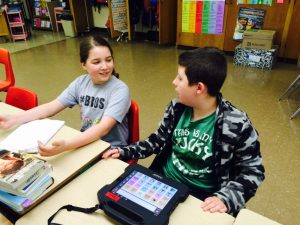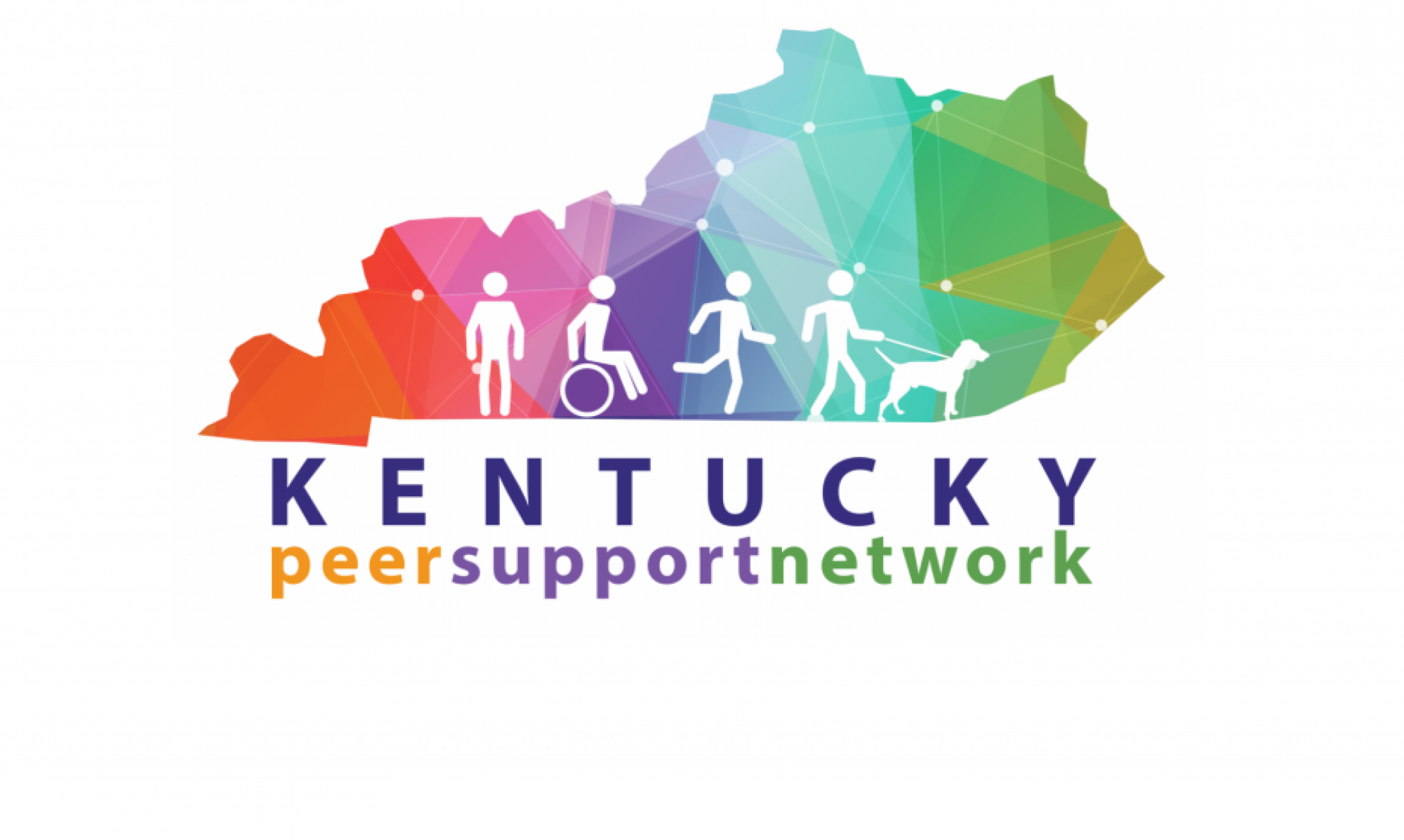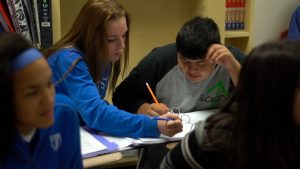What are peer support arrangements?
When we consider how to support students with significant disabilities in school environments, we may think about special education classrooms with more intense adult support than is usually provided in general education classrooms. However, current research points out the benefits of inclusive general education classes, in which students with significant disabilities are educated alongside their non-disabled peers. The question then becomes, how do we provide the necessary supports for students with disabilities to participate in general education classes?
The use of para-educators, traditionally as a one-to-one support to the student, has been the most frequent response, but what if there was a better way? One-on-one adult support can enable a student with a significant disability to participate in a general education classroom, but this adult support often impedes the social interactions that are so valuable to all students. Peer support arrangements are a way to provide needed academic support to students with developmental and intellectual disabilities, while also enabling students to interact with their classmates, engage in class activities, practice social skills, and potentially build lasting friendships. Peers without disabilities benefit in similar ways as well. Beyond the social opportunities, research shows that students who themselves were just getting by or even struggling in a class raised their grades by over a full letter grade in classes where they supported a peer with a significant disability!

Based on the work of Dr. Erik Carter, peer support arrangements connect a student with a significant disability to one to three students without disabilities, in a general education class, for shared learning and relationship-building. Each student involved is fully enrolled in that class; they form a community of learners, providing academic and social support to each other. An adult facilitator (such as the para-educator) provides guidance and models support strategies. The facilitator gradually fades back as the group learns to work together, but continues to monitor the arrangement and steps in should the students need additional support. Peers can help each other take notes, encourage group members to ask or answer questions, explain directions on an assignment or activity, partner with each other for group work, and encourage the use of communication devices, if applicable. Peer support arrangements allow students with disabilities to access the general curriculum with the academic support they need, all the while enjoying meaningful social interactions with their peers.
Below are the basic steps to implementing peer support arrangements (these can also be found on the ‘Peer Support Arrangement Tip Sheet’ on our Resources page!):
-
- Identify students with disabilities who need assistance to participate in general education class activities.
-
- Identify classes
-
- Identify school personnel who need to be involved.
-
- Recruit peers from within the same classroom to help provide some of these supports. Arrange for students to sit next to each other.
-
- Create an individualized peer support plan for each focus student (e.g., what will the focus student be expected to do, what will the peers be expected to do, how will the paraprofessional and/or other adults facilitate academic engagement and social interactions for the focus student?)
-
- Orient peers to their roles, explaining the rationale for their involvement, and showing them basic support strategies.
- Shift paraprofessionals from direct 1:1 support for students with disabilities to a broader support role as facilitator and classroom based support.
-
- Provide ongoing feedback and assistance to peers and their partners throughout the semester.
- Provide assistance to all students in the class as appropriate.
For more information on peer support arrangements, including how to select peers, setting goals, an example peer support plan, etc., please visit the Resources page of this website.

